|
The Task Manager Utility
|
|
Overview: To access the task manager, you can either press ctrl-alt-delete or you can right-click a clear area of the taskbar and select 'task manager'. The next image shows the dialog box you see when you use the right-click method.
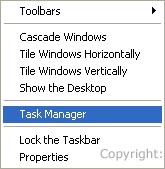 On the fire tab labeled 'applications', all open applications are listed. If you have a program that stops responding and will not shut down properly, you can select the program you wish to close and click the 'End Task' button. The 'Switch To' tab will switch to a selected application but it's easier to simply click it's button on the taskbar. The 'New Task' button will open new programs but you can more easily do that from the start button.
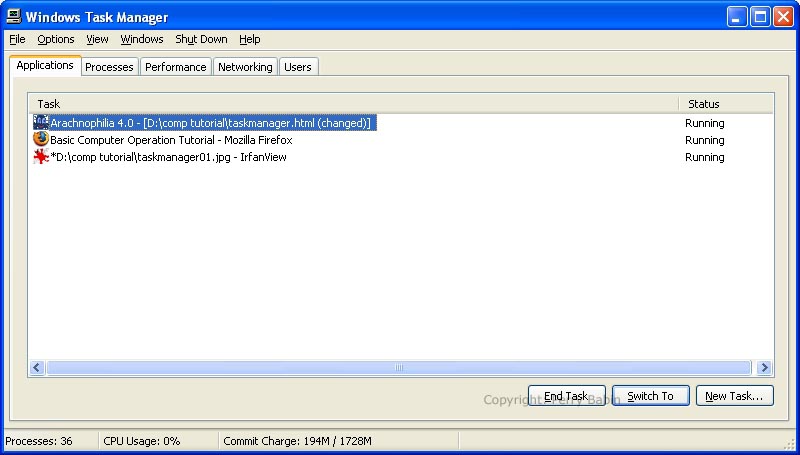 The 'Processes' tab shows you all of the programs and processes that are currently running. The programs listed may or may not have the same name here as they do when you open them but you can usually determine what each program is. For example, I have Irfanview open. In the processes list, there is no 'irfanview' but there is a 'I_view'. It's obvious that they're the same program. If you had a problem with a particular program and it would not shut down in the applications section, you could come here, highlight the program and select 'End Process'. It is rare that a program can not be shut down from here. If a program can not be shut down from this panel, it's likely that you will have to restart you computer to shut down the errant program.
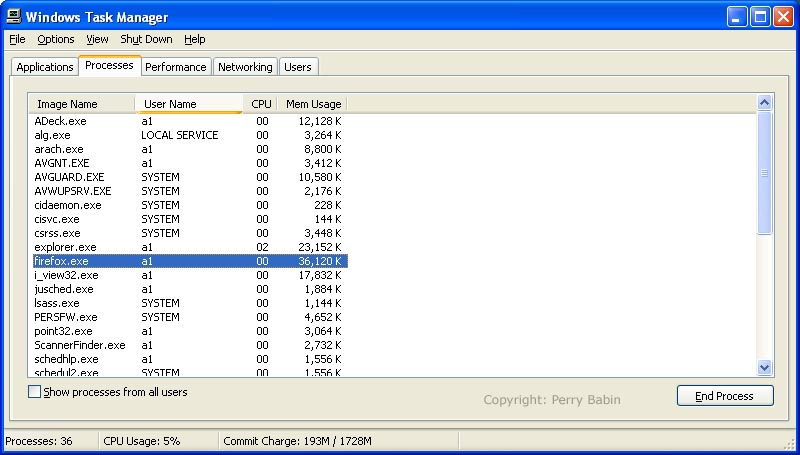 This is the 'Performance' tab. Here you can see how hard your processor is working. The bar at the left indicates processor usage. The graph at the right shows the history of how hard it has been working in the last few minutes. On this graph, you can see that is was doing very little then for a couple of minutes (nearly 2 minutes, actually), the processor was working at or near 100%. For this example, I ran a scan with Spybot to show what the higher usage would look like. The 'PF' history is the amount of 'virtual memory' the computer has used. The 'Commit Charge' is the amount of memory (physical and virtual memory combined) used by all of the running programs and processes. The 'total', is the current usage. The 'Limit' is the maximum available at any time. 'Peak' is the highest seen by the system since it was rebooted. The 'Physical Memory' section shows the total installed system memory, the available portion of that memory and the portion of that memory allocated to data that has been frequently/recently accessed. The 'Kernel Memory' is the memory being used by the core of the operating system. Paged items are in virtual memory (on disk). Non-paged items are in physical (electronic) memory.
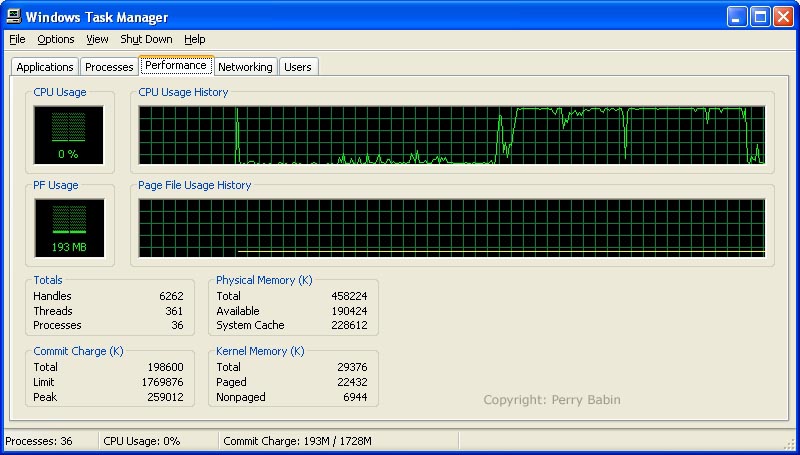 This is the network usage/history tab. Here, you can see that there has been little network activity other than the time that I transferred a file from another computer. Notice that the system shows a 100Mbps speed. If this computer had a gigabit LAN card, the system speed would read 1Gbps (1000Mbps).
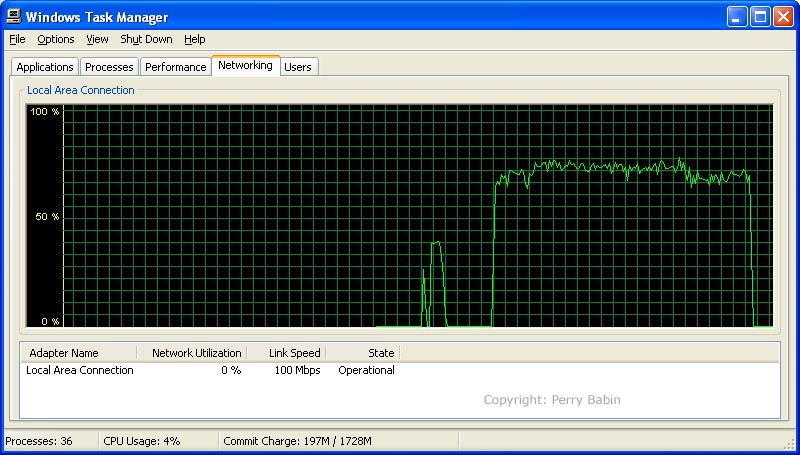 This simply shows all of the users that are logged onto the computer. Since we have only one user account on this machine, this tab will be used very little.
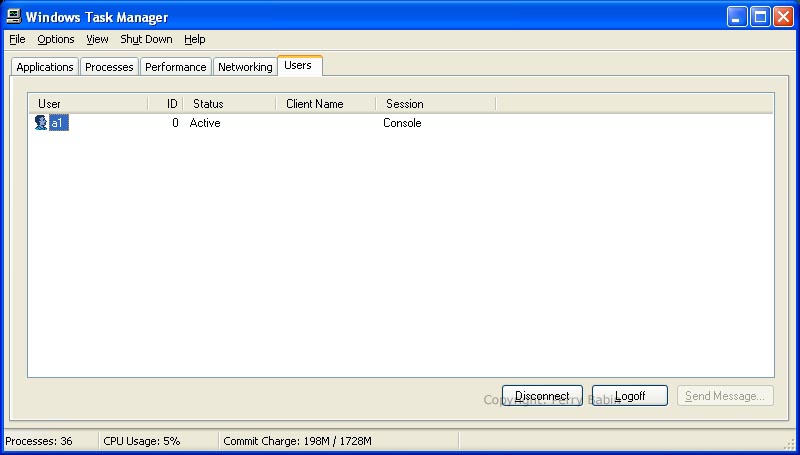
|
|
| Contact Me: babin_perry@yahoo.com | |
|
Perry Babin 2005 - Present All Rights Reserved
|